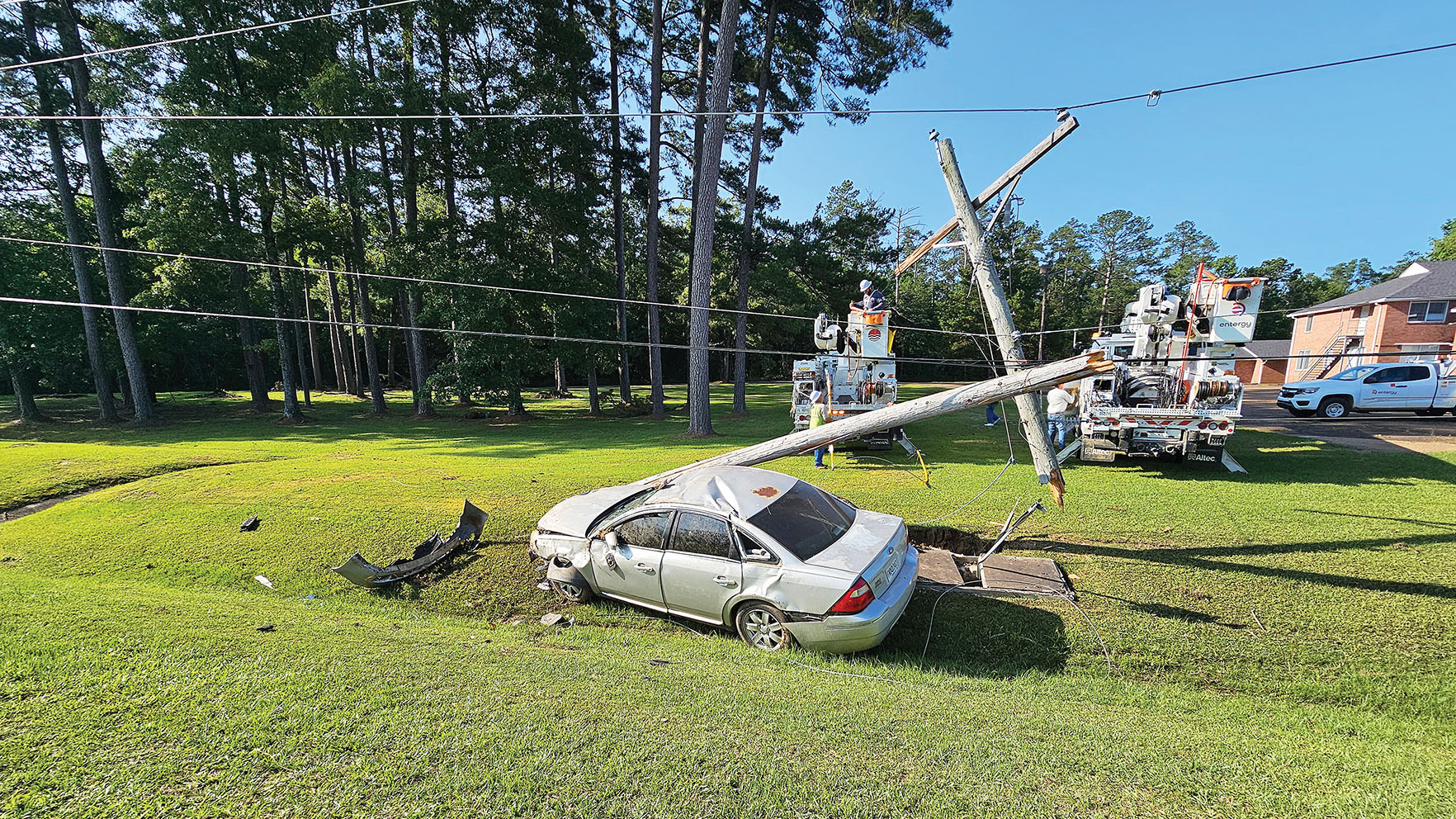Claiborne County CWD feed ban lifted by commissions new rule
Published 10:45 am Thursday, November 17, 2022

- A buck checks out a licking branch on a line of scrapes along the edge of a food plot in Lincoln County. Mississippi State’s Deer Lab found they could detect CWD prions in samples taken from scrapes in North Mississippi at the heart of the CWD hot zone and later found prions accumulated on feeders (Hunter Cloud’s Trail Cam | The Daily Leader)
JACKSON — Mississippi Department of Wildlife, Fisheries and Parks Commissioners met for their monthly meeting Thursday morning. They made a major decision in lifting the feed ban in Claiborne County through a new rule which changes how the CWD zone is decided.
Charlie Davis of Lincoln County was the first to speak, presenting a public comment on Claiborne County’s CWD supplemental feed ban enacted this summer.
Davis asked the commission to lift the feed ban, as did Eddie Buckner, owner of Delta Outfitters in Vicksburg. Commissioner Leonard Bentz made a motion to rescind the feed ban by establishing the main channel of the Mississippi River as the demarcation for placing counties in CWD zones.
He said a CWD-positive deer found west of the channel would not place a county in a CWD zone, but a positive deer east of the channel would. Bentz said it would effectively move Claiborne County out of the zone as the case came from the west side of the main channel. This motion was seconded and voted on by the commission. Bentz, Scott Coopwood and Gary Rhoads voted for the rule while William M. Mounger II voted against the rule. Bentz said he was opposed to placing Claiborne County in the zone in the first place.
The Louisiana Department of Wildlife and Fisheries discovered its first positive CWD deer near Yucatan Lake in Tensas Parish. This positive buck was confirmed in 2022 and was found a mile from Davis Island, Mississippi, and about six miles from the right bank of the Mississippi River.
MDWFP’s Commissioners placed Claiborne County in a supplemental feed ban due to the positive’s proximity to Mississippi. MSU Deer Lab research has shown bucks along the Mississippi River swim across the river and cover up to 18 miles in their movements.
“I am familiar with the studies, but I do want the record to show this motion stems from our last vote on this,” Bentz said.
The move contradicts the Association of Fish and Wildlife Agencies report on the best management practices for CWD. AFWA’s report, published in 2018, recommends states and provinces should eliminate unnatural congregation of deer through feeding and baiting with a ban on supplemental feed and mineral lick sites due to infected deer contaminating the environment. CWD prions remain present in a contaminated environment long after its host dies.
Food plots are a way for hunters and landowners to supplement a deer’s diet. Additionally, proper habitat management practices can improve forage quality for deer to improve nutrition to grow bigger and better deer.
One of MSU’s recommended practices for improving the quality of a deer herd is through harvest to bring down deer density. Those practices are not included in the supplemental feeding ban because they do not encourage unnatural congregations of deer in close proximity.
Mounger said he grew up in Claiborne County and can remember a time when deer were scarce in Mississippi. He asked his colleagues, those in attendance and the public to tune in to their educational session in December to learn more about the disease.
It is a complex issue because the department is asked to balance the desire of hunters and economics while protecting the state’s natural resources.
Mounger encouraged the public to submit samples, so the MDWFP knows if there is CWD in an area and they can contain it early.
He said a friend of his named Terry Abby owns land in North Mississippi in Benton County where 94 CWD positives have been found since 2018. Of the 12 CWD positives in Mississippi, 11 have come from north Mississippi this season.
“There are no big deer up there anymore. The bucks move around naturally and catch it. Once it gets a hold of a deer herd, it will be decimated here. We will lose all of the industry. Not just feed but guns, tree stands and blinds,” Mounger said. “If you don’t know it we will end up like north Mississippi. Hear how property values have gone down in north Mississippi. If we could stop it here it would be great. We know the deer cross the river. It is not an impenetrable barrier.”
In their June meeting, MDWFP created an exit plan for counties in a CWD Management Zone. Counties must go three years without a detection of a positive before being moved out of a CWD management zone. Warren County, Claiborne County, and the majority of Issaquena County are currently CWD management zones.
Davis and Buckner both said they only heard negative things about CWD. Mounger said everything did not have to be seen as a negative in handling the disease.
CWD is a 100 percent, always fatal disease, he said. Infectious prions get into a deer’s system and create holes in neurological tissue. It takes about two years for the disease to waste a deer away. They look perfectly healthy for two years and then they go downhill quickly in the last stages of the disease.
“I respect this motion and understand we have to have balance. What guides me is that in 20 years I want to look back on this,” he said. “I do not want to see CWD take a hold of Claiborne, Issaquena or Warren Counties. I want to see that I took all of the precautions I could to stop it. I want my grandchildren to have a place to hunt and a healthy deer herd to hunt. We need to do whatever we can. People need to continue to get educated. We need to find the cancer before it takes us all down.”





